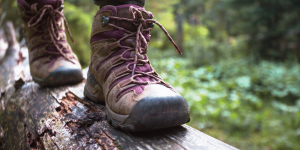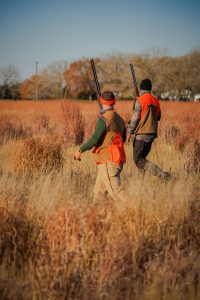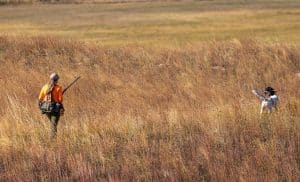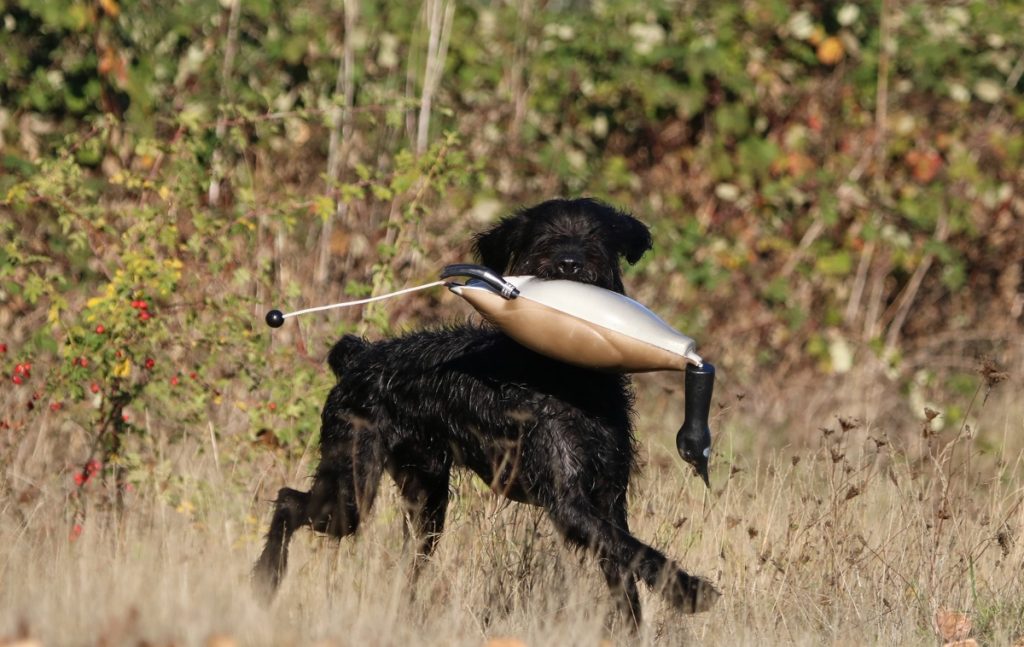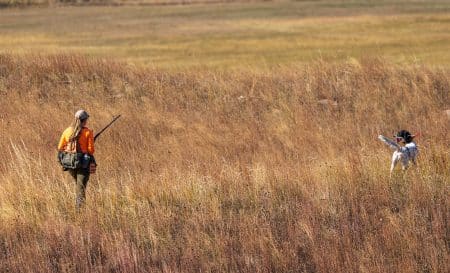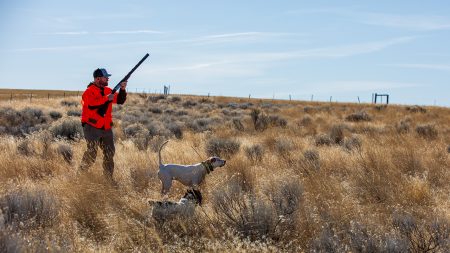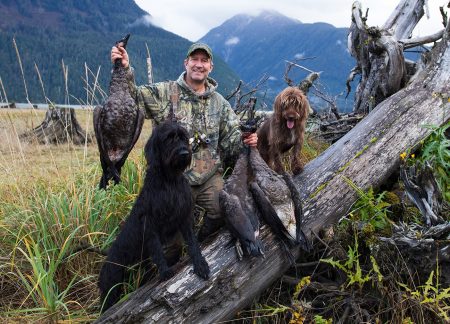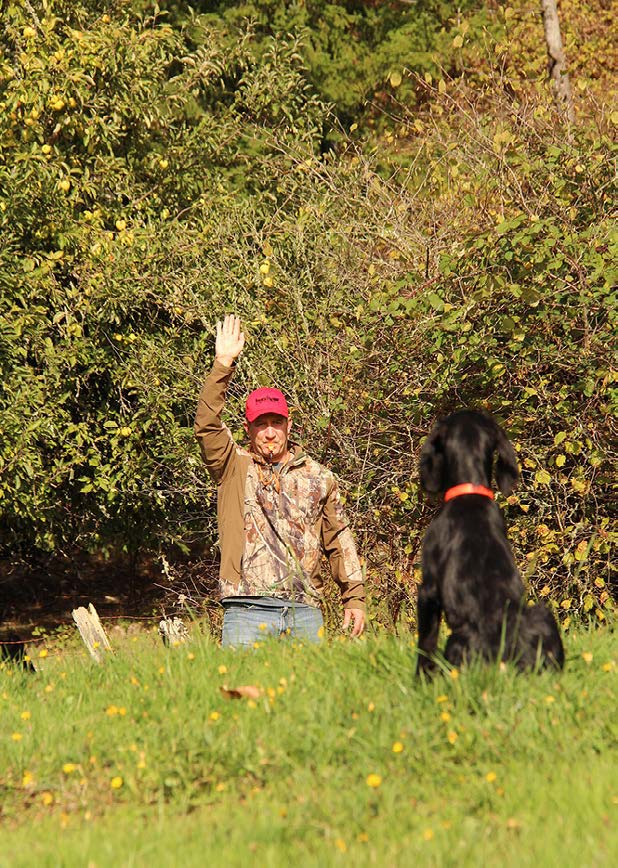Depending on where you live, summer water training can still find hunting dogs working in cold water. But as the months progress, the transition to training in warmer water will likely take place. Both cold and warm water training with your dog have their advantages and dangers. Echo, my 11 1/2-year-old pudelpointer, loves the water no matter how cold or warm it is. She’ll break ice all day long to get ducks and she’d work herself to death in warm water training sessions if I didn’t closely monitor her. Kona, my 9 year old male, is more self-regulatory. It’s easier to read his eyes and body language when he’s uncomfortable in cold and warm water.
What to Do if the Water is Still Cold
If the water is still cold where you’re training, be careful. This is especially important if air temperatures are hot because you could misinterpret it to mean the cold water is soothing for your dog. While it might feel good the first few times in, prolonged time in cold water could be detrimental to your dog’s health. “There are signs to look for during this transitional time of the year when it comes to water training,” note Jess Spradley of Cabin Creek Gun Dogs in Lakeview, Oregon. Spradley is one of the country’s top trainers of versatile gun dogs and where he lives, the water stays cold for a long time.
“Pay close attention to your dog and if it starts to shiver, stop sending it into the cold water,” Spradley advises. “A dog’s drive can be so extreme you’ll often mistake its shaking for intense anticipation. They’re not the same thing.” Spradley advocates short training sessions if the water is cold. “Work on achieving a few crisp water entries and keep the distance the dog is swimming relatively short. This will keep the dog from getting too cold, while still achieving the training you desire. In cold water, a fun, brief bumper session might be a better approach than instructional training time that can drag on and leave you and your dog, frustrated. In fact, if the water is cold, I typically don’t try to teach anything to a dog because if they need more repetition to remedy a situation, forcing it into cold water quickly becomes counterproductive.”
Puppy Training in Cold Water
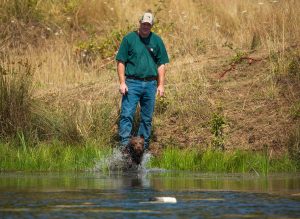
Spradley also warns against forcing a puppy into cold water, as it may quickly lead to avoidance issues. I’ve seen this many times and in some cases, it was so severe the dog never liked going into water, again, no matter how many ducks were flopping in the decoys. Such a traumatic shock to a pup can ruin it, so be patient and use wise judgement.
Warm Water Dog Training Techniques
As summer heat intensifies and water temperatures warm up, the flip-side of water training with your dog can happen. This has to do with a dog overheating because the water is too warm for them to actually cool off. In other words, their body is generating more heat than it can dissipate, and this can lead to hyperthermia (not hypothermia). Hyperthermia is when the body temperature is greatly above normal, and this is a very common and dangerous thing that happens in the summer.
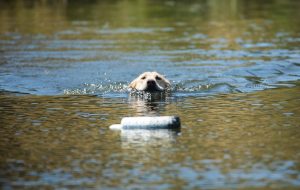
In driven hunting dogs, overheating is a real concern even when training in warm water. If the water is warm, ease your dog into it. Don’t just toss bumper after bumper into warm water, as the physical exertion of swimming in such temperatures can quickly exhaust a dog. Instead, start your training session with a short run on dry land to get your dog warmed up and acclimated to the air temperature. Doing this early and late in the day, when air temperatures are cool, is a must for obvious safety reasons.
Next, start slow in the warm water, with short retrieves. Don’t push things. Look for signs of heat stress, like excessive panting, cheeks that are pulled back to the point the molars are showing, and a flat or widened tongue. If you see any of these, immediately stop training for the day and sooth the dog by applying cold water to the paws, belly, behind the ears and between the front and back legs. Rinse its mouth with cold water. Be sure to have plenty of cold water when training on hot summer days. Should the signs persist, consult a vet as heat exhaustion or worse yet, heat stroke, can result.
The summer months are very important for training your hunting dog. Pay attention to water and air temperatures at all times and watch your dog closely. Remember, hunting dogs are much different than non-hunting dogs, and their drive and ability to hide pain is mind boggling. Go into each training situation prepared, be sure your dog is drinking more water during the summer months, work smart, and you and your dog will be in prime shape come hunting season.
Note: Scott Haugen is a full-time writer. See his basic puppy training videos and learn more from his many articles and books at scotthaugen.com. Follow his adventures on Instagram & Facebook.
Per our affiliate disclosure, we may earn revenue from the products available on this page.
